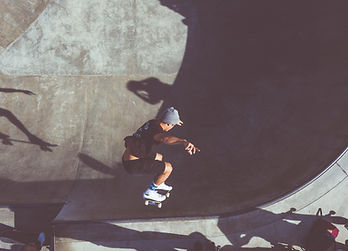SailGP’s Seven-Platform Strategy: Melissa Lawton, SailGP's Cheif Content Officer Explains How the League’s Remote Production and Viral Content Drive Growth

Melissa, SailGP is nearing the end of its third season. Can you tell us how the league has evolved in terms of its content strategy?
Melissa: SailGP is a high-performance racing league, and we’re all about growth and awareness right now. We want to be everywhere — on every platform, in as many formats as possible. We follow what I call a "seven-platform strategy." That includes traditional broadcasts, digital platforms like YouTube, Facebook, and then social media channels like TikTok, where younger fans can discover us. We're focusing on making sure each platform gets content tailored to its audience.
You mentioned digital and social media. How big of a role do they play compared to traditional broadcasts?
Melissa: A huge role. When I was at Red Bull and Meta, I saw firsthand how digital production was becoming the fastest, most affordable way to get your content out there. Now at SailGP, we're really leaning into that — especially with TikTok and YouTube Shorts, where we’re connecting with younger viewers. For example, we recently had a "man overboard" moment — and once it was safe to share, we got that clip on TikTok almost immediately. It went viral within hours.
Interviewer: It sounds like speed is key. How do you manage that with such a small team?
Melissa: Absolutely, speed is critical. We've set up a system where our vertical video producers can quickly turn around clips during live broadcasts. This is possible because most of our production is remote — our crew in London processes and publishes footage while the race is happening. So when that man-overboard clip came in, we were able to upload it within minutes.
Interviewer: SailGP also has a strong environmental focus. How do you balance that with the tech-heavy production side of things?
Melissa: Sustainability is at the core of everything we do. Our broadcasts are almost entirely remote, so instead of having 140 people on-site, we’ve got 30. We also use biofuel for our helicopters and are always looking to reduce our footprint even more. It aligns with our mission — we’re powered by nature, and we want to leave the planet in a better place.
Interviewer: With such a small on-site team, what tools are you using to handle the production remotely?
Melissa: We rely on tools like Greenfly, which lets anyone on-site — even a boat driver with a phone — capture content that’s instantly shared with our London-based team. We also use tools like monday.com to manage distribution across platforms and keep everything organized. It helps us scale our efforts without needing a huge team.
Interviewer: How do you decide what content to push on each platform?
Melissa: It’s all about data. We study what works and what doesn’t. For example, we’ve learned that our TikTok audience loves visually dramatic content, like high-speed clips or onboard action. They don’t need to understand the technical sailing jargon — they just want the excitement. For YouTube, we might focus more on storytelling and behind-the-scenes content, like technology deep dives or athlete interviews.
Interviewer: Speaking of storytelling, how do you make sure the audience understands what’s happening during the races, especially if they’re new to sailing?
Melissa: We keep it simple. We’ve learned that people want to see the boats, the action, the competition. So we don’t get bogged down explaining every technical term like "tacking" or "jibing." It’s more about making it clear who’s winning, who’s taking risks, and what’s at stake. We use augmented reality to show the field of play, which helps viewers understand what’s happening in real-time.
Interviewer: You’ve mentioned augmented reality a few times. What’s next in that space for SailGP?
Melissa: Next season, we’re pushing our augmented reality even further. Right now, we use it mostly to show the race course, but there’s a lot more potential. We’re working on creating AR elements that add more entertainment value and help tell the story of the race in new ways. We’re also adding another helicopter to capture more angles and action. The goal is to give viewers an even more immersive experience.
Interviewer: It sounds like SailGP is really focused on innovation. What are the key takeaways from season three that you’ll carry into the next season?
Melissa: We’ve learned a lot, especially about how people consume our content. The biggest change has been in our live broadcasts — we now focus on getting to the racing as quickly as possible, because that’s what people want. We’ve also seen that audiences are really interested in the technology behind the boats, so we’ll be creating more content around that. Season four is going to be all about refining what we’ve learned and pushing the boundaries even further.
Interviewer: Thanks, Melissa! We’re excited to see what’s next for SailGP.
Melissa: Thank you! Stay tuned for San Francisco and season four — we’ve got some exciting things coming.


Comments